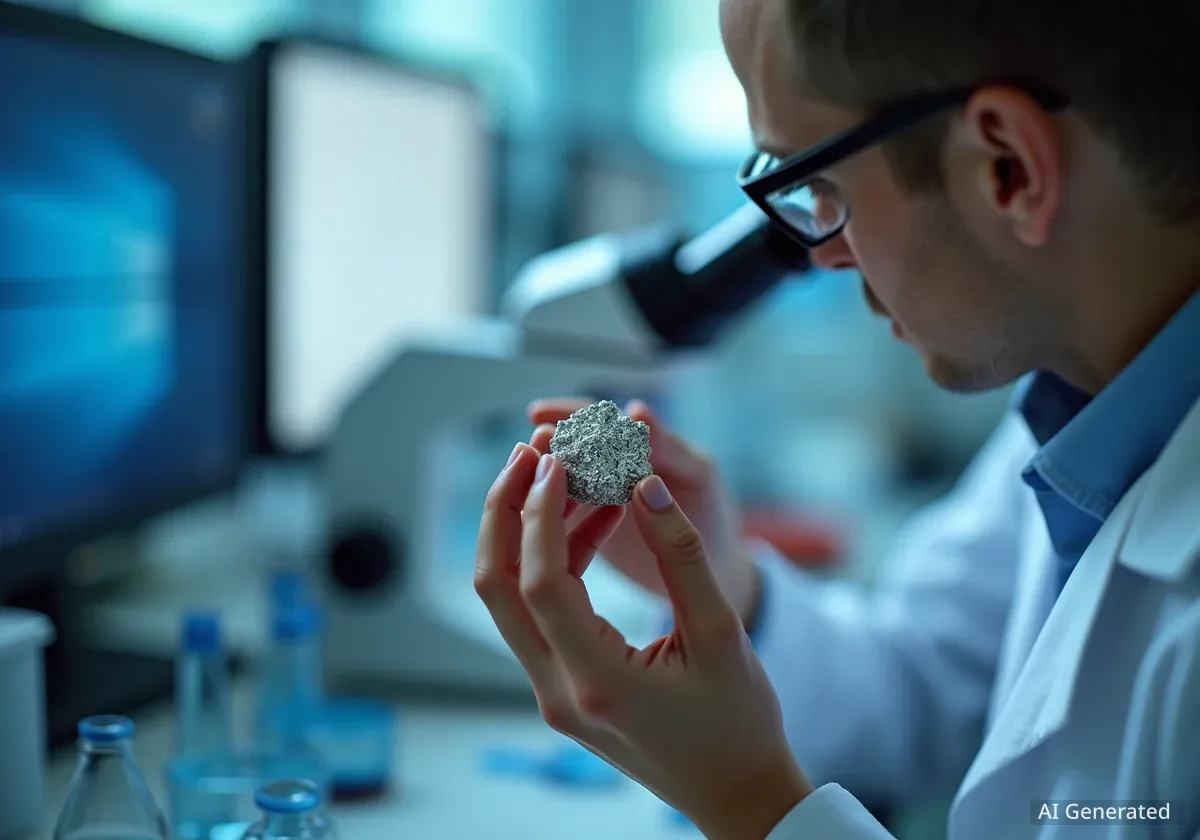The University of North Dakota is advancing its research on rare earth elements through a new international collaboration and a push to commercialize its technology domestically. The university's College of Engineering and Mines Research Institute recently signed a memorandum of understanding with Bulgarian Energy Holding, a state-owned company, to explore critical mineral extraction in Eastern Europe.
This partnership runs parallel to the institute's efforts to secure federal funding from the U.S. Department of Energy. The goal is to build a commercial-scale demonstration project for extracting these vital materials within North Dakota, potentially positioning the state as a key player in the domestic supply chain for critical minerals.
Key Takeaways
- The University of North Dakota (UND) has partnered with Bulgarian Energy Holding to research rare earth element extraction.
- The collaboration will focus on processing lignite from Bulgaria's Maritsa Basin, a region known for its coal deposits.
- UND is also seeking U.S. Department of Energy funding to build a commercial demonstration facility in North Dakota.
- Rare earth elements are essential for manufacturing modern electronics, electric vehicles, and renewable energy technologies like wind turbines.
A Domestic Push for Commercialization
At home, the UND Research Institute is actively pursuing opportunities to translate nearly a decade of research into a viable commercial enterprise. The institute is targeting a recent funding announcement from the Department of Energy aimed at establishing domestic sources for critical materials and rare earth elements (REEs).
Daniel Laudal, executive director of the institute, expressed confidence in the university's position. "We think we’re in a good position to be competitive and we’re hopeful we’ll be able to bring in quite a bit of federal funding to build the first project here in the state," he said.
The timeline for this domestic project is ambitious. "We’re very hopeful that, within the next year or so, we’re going to be in a position to move forward with our first project," Laudal added. Success in securing this funding would mark a significant step toward creating a new industry in North Dakota centered on materials crucial for national security and technological advancement.
What Are Rare Earth Elements?
Despite their name, rare earth elements are not necessarily rare in the Earth's crust. However, they are seldom found in concentrations high enough to make extraction economically viable. The group includes 17 metallic elements that are critical components in a wide range of modern technologies.
Forging an International Alliance in Bulgaria
Beyond its domestic ambitions, UND is extending its expertise globally. The new memorandum of understanding with Bulgarian Energy Holding (BEH) establishes a formal research initiative focused on Bulgaria’s Maritsa Basin. This region is rich in lignite, a type of coal that can contain valuable rare earth elements.
The partnership will combine UND's innovative extraction technology with BEH's resources and access to the region. Key activities planned under the agreement include:
- Exploring the potential of processing lignite for REE extraction.
- Conducting advanced laboratory testing on material samples.
- Performing detailed techno-economic studies to assess commercial viability.
- Establishing a Center for Critical Raw Materials Research and Knowledge in Bulgaria.
Initially, the collaboration will involve remote consultations and shipping small samples between North Dakota and Bulgaria. The long-term vision, however, includes developing physical infrastructure and potentially launching commercial extraction projects in Bulgaria to support European supply chains.
"Bulgaria and the United States are not only partners in strategic dialogue, but also allies who value the achievements and choices of our civilization," said Bulgarian Prime Minister Rosen Zhelyazkov. "Through the development of the research capacity of the University of North Dakota, we can expand the possibilities contained in the Bulgarian subsoil."
The Global Significance of Critical Minerals
The push for new sources of rare earth elements stems from their indispensable role in the global economy. These materials are fundamental to high-tech and green-energy industries. Without them, many of the devices we rely on daily would not function as they do.
Everyday Impact of REEs
Rare earth elements like gallium and germanium are essential for producing items such as smartphones, computers, microchips, LEDs, and lasers. They are also critical for manufacturing powerful magnets used in electric vehicle motors and wind turbines, making them vital to the transition away from fossil fuels.
Scott Snyder, Vice President for Research and Economic Development at UND, highlighted the growing demand. "There is a rapidly growing need for critical minerals in the U.S. and its allies," he stated. Snyder noted that the Bulgarian agreement demonstrates how UND's research can support economic development both locally and internationally.
Dean Ryan Adams of the College of Engineering and Mines echoed this sentiment, emphasizing the strategic importance of the collaboration. He said the agreement "gives us an opportunity to expand on our work in critical minerals and help one of our NATO allies."
A Decade of Research Reaches a New Stage
For Daniel Laudal, these developments are the culmination of years of dedicated work. His involvement with REE research at UND began with his Ph.D. studies in 2016, which formed some of the institute's earliest investigations into the subject.
"At a personal level, because I’ve been so invested in this for quite a long time now," Laudal said, expressing his excitement about extending the research beyond North Dakota. The move to apply the university's findings in both a domestic commercial setting and an international partnership marks a new, more impactful phase for the program.
As the collaboration with Bulgaria gets underway, the immediate focus is on finalizing the initial work plan and securing funding sources. This foundational stage will set the course for a partnership that could enhance mineral supply chain security for both the United States and its European allies.





